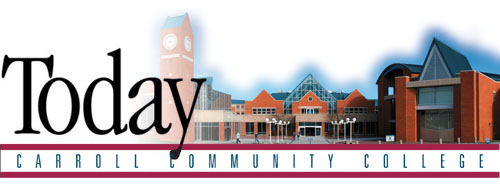
|
Spring 2001, No. 3 |
|
ContentsConstruction Project Will Enhance Fine Arts, Business Training, Life Fitness College Proposing New Nursing Program, Building College Implements Marketing Plan College Identifies Technology Objectives
|
| College Proposing New Nursing Program, Building | ||
|
I n response to an urgent local and regional need for nurses and other health care professionals, the college is proposing introduction of an Associate Degree in Nursing program and construction of a new building on campus to support nursing and allied health instruction. The chief executive officers of Carroll County General Hospital, Carroll Lutheran Village, Springfield Hospital Center, and Westminster Nursing and Rehabilitation Center met with college president Faye Pappalardo and urged the college to institute expanded nursing and allied health programs. In January the four executives also sent a letter of support for the programs and a new Nursing and Health Sciences Building for the Carroll Community College campus to the County Commissioners. As it does for all proposed programs, the college conducted a thorough, local and regional needs assessment. Governmental and industry publications and studies were reviewed, and the college’s institutional research office conducted a survey of assisted living facilities and physicians’ offices in the county. All findings supported the conclusion of a current and future need for nurses at all levels: certified nursing assistants, licensed practical nurses, and registered nurses. Over 3,300 people work in health services in Carroll County and the number is increasing. Their total annual payroll exceeds $90 million, or ten percent of the total private sector wages earned in the county. Health care is a big industry in Carroll County, as well as in the state. Maryland will need over 56,000 nurses in 2006, according to projections. Yet vacancy rates for hospital nurses are 4 times their normal rate now. The Maryland General Assembly has appointed a “Commission on the Crisis in Nursing” in recognition of the problem. There is clearly a demand for nurses and related personnel. What about the supply? Final 2000 data are not in yet, but in 1999 there were 2,000 fewer nurses licensed to practice in Maryland than a year earlier. This trend is expected to continue as the large number of baby-boom nurses reach retirement age. In 1999, for every eight nurses retiring, only three new graduates entered the field. Demography and medical technology are driving this crisis. The huge baby-boom generation is aging and living longer. The fastest growing segment of Carroll County’s population is people over age 60. Between now and 2005, the number of senior citizens in the county is expected to grow by over 4,500. As they grow older most will need health care, whether in hospitals, nursing homes, assisted living facilities, or at home. The national labor market literature suggests that the nursing shortage will worsen sharply in the period 2005 to 2010. An analysis of the existing nursing labor force in Maryland suggests the same. A large number of the nurses currently working will be expected to drop out of the labor force during the 2005 to 2010 time frame. As proposed, the college’s programs could begin in September 2003. The college could be contributing to the solution of this problem just as it starts to worsen: our programs would be producing graduates by 2005—just when they are most needed. The college will need the support of the County Commissioners, the State of Maryland, and the Maryland Higher Education Commission to move forward with this proposal.
|
||